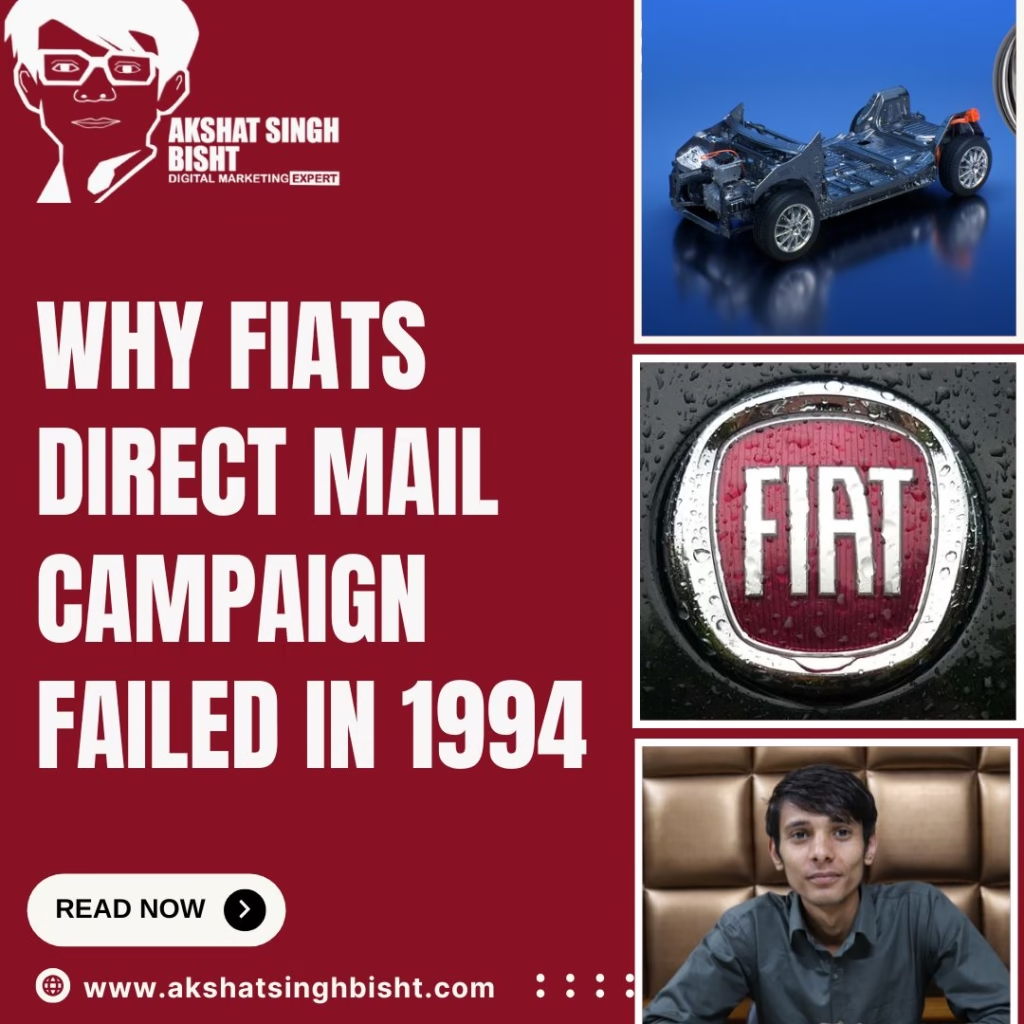In the world of marketing, direct mail campaigns have often been hailed as a powerful tool to reach potential customers directly. However, not all campaigns yield the desired results, and some even end up as cautionary tales. One such case is Fiat’s direct mail campaign in 1994, which failed spectacularly despite its innovative approach. This case study delves into the details of the campaign, its objectives, execution, and the factors that led to its failure.

In the early 1990s, Fiat was striving to revamp its image and boost sales in the competitive automotive market. The company decided to launch a direct mail campaign targeting a specific segment of potential customers. The goal was to increase awareness and drive sales of their latest models by leveraging a personalized and engaging marketing approach.
Fiat’s marketing team devised a unique direct mail campaign centered around the theme of personalization and surprise. The campaign involved sending letters to potential customers, informing them that their neighbors had anonymously reported them as poor drivers and suggesting that they consider test-driving a new Fiat to improve their driving skills. The letters included a personalized note and an invitation to visit a local Fiat dealership for a test drive.
The campaign was executed in the following steps:
Despite the creative concept, the campaign quickly backfired. The recipients of the letters did not appreciate being labeled as poor drivers, even in a playful manner. Many found the letters insulting and intrusive, leading to a significant backlash against Fiat.
Several factors contributed to the failure of Fiat’s direct mail campaign:
Fiat’s 1994 direct mail campaign serves as a valuable lesson in the importance of understanding audience sentiment and the potential risks of personalized marketing. Key takeaways include:
Fiat’s direct mail campaign in 1994 is a classic example of how a well-intentioned but poorly executed marketing strategy can lead to significant backlash and damage to a brand’s image. By learning from such failures, marketers can better navigate the complexities of audience engagement and create campaigns that resonate positively with their target audience.
Akshat’s passion for marketing and dedication to helping others has been the driving force behind AkshatSinghBisht.com. Known for his insightful perspectives, practical advice, and unwavering commitment to his audience, Akshat is a trusted voice in the marketing community.
If you have any questions simply use the following contact details.